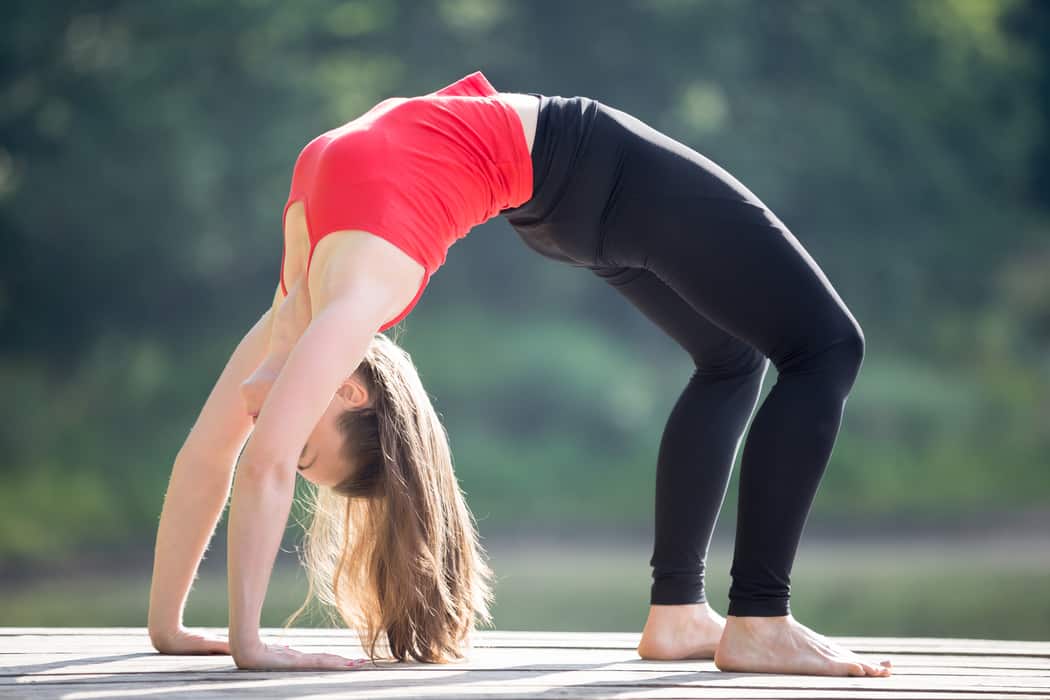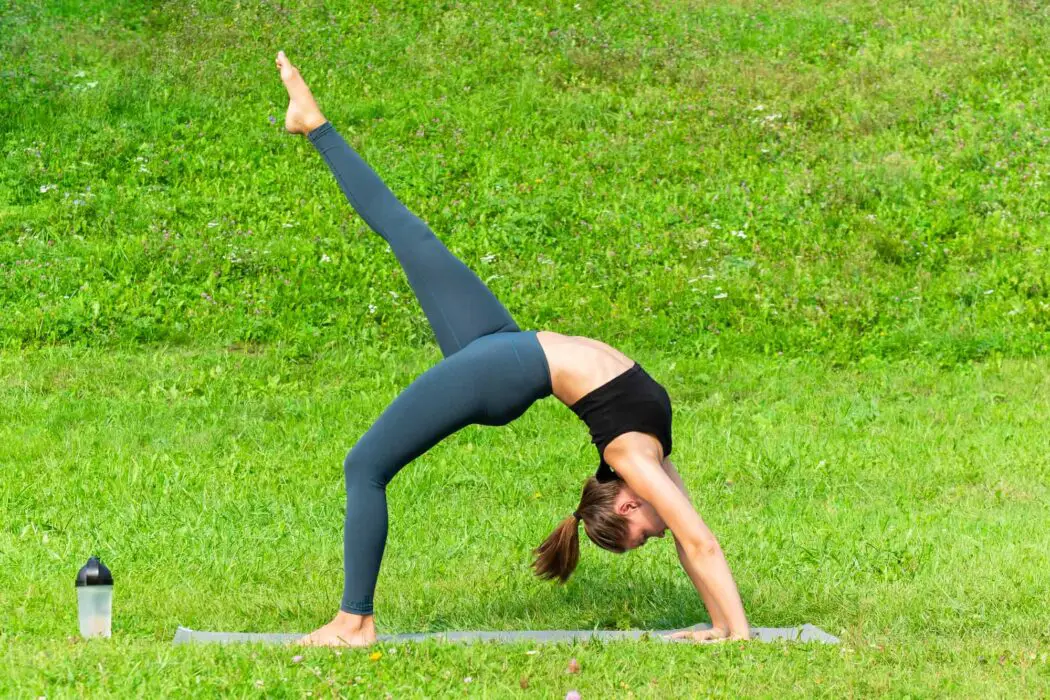
चक्रासन: Cakrāsana= wheel pose
ऊर्ध्वधनुरासन: Ūrdhvadhanurāsana= upward facing bow
As with all other backbends, this pose can help fight the consequences of the whole day sitting on your chair. When you do the Wheel pose, you additionally stretch the front part of the body and open the chest. You may need to approach this asana gradually. One of the preparatory poses for it is a Bridge pose. So pay attention to your body condition and achieve the pose variation that matches your spinal flexibility and muscle strength.
How to Do It
Start lying on the back on your mat. Bend your legs and put soles of the feet on the mat – hip-wide and close to the buttocks. Point toes to the front edge of the mat. Make your soles parallel to each other.
Next, bend your elbows and put palms under your shoulders. Point your fingertips towards your feet. Check up the position of your elbows and ensure they don’t splay out to the sides.
Then, actively press the palms and soles to the mat and lift shoulders and hips off the floor. On this step, don’t push the chest and belly up. First, take a few moments to adjust the head. For this, place the head’s crown on the mat but watch for your neck, and don’t put all the body weight on the neck to avoid injuries.
And now take the next step, and push up and away from the floor. And slowly begin to straighten your legs. Gaze between your hands. Hold the Wheel pose for several breath cycles.
To come out of the pose, you’ll need to tuck your chin first to protect the neck. After that, lower the body.
Benefits
- The pose offers a full-body stretch and helps release the tension in the shoulder area.
- Also, it stretches the abdominals. It’s known as a good pose for opening the heart center and mood changer.
- It adds to the shoulders’ flexibility and builds stronger arms.
Precautions
Don’t try to get into the pose using enforcement. This backbend is more about solid muscles and a flexible spine. And that is not a one-minute task.
Also, avoid doing a Wheel pose if you have any joint injury in the wrists, hands, or legs (especially knees).
Modifications
Beginner: Holding a block between your knees will protect your knee from splaying out. Plus, this will engage your thigh muscles more, so you’ll get a double benefit from the block.
Also, you can use a strap around your arms to keep them from sliding to the sides. Make a loop that equals your shoulders’ width and put it on the shoulder bones just above your elbows.
Asking a partner to support you in the Wheel pose is another good idea for yoga beginners.
3 Bridge Pose Variations to Spice up Your Practice
Advanced: When you feel safe and confident in the pose, you can try lifting one leg and holding it like this. Another option is to walk your feet closer to your arms.

For example:
Common Mistakes
Pushing your pelvis up too much can cause extra bending in the lower back and spinal compression. To prevent this, only tighten the buttocks, but don’t push up intensively.
Another issue in the Wheel pose is an incorrect position of feet and knees. If you have trouble controlling your legs with muscles, don’t worry. Instead, use a block or a strap as described in the section Beginner modification above.
And remember always to warm up before you practice backbends.